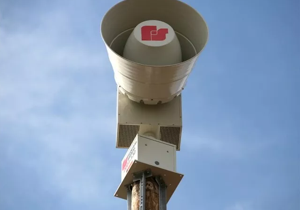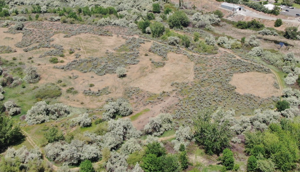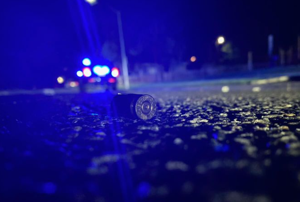
TRI-CITIES, Wash.- 2023 marks the 57th time that unlimited hydroplanes will churn up the Columbia River, competing for the Columbia Cup in the Tri-Cities annual festival of sun, fun and speed.
Economics and decreasing sponsorships have severely impacted the sport of hydroplane racing in recent years, with the number of race teams dwindling and race sites dropping from the circuit, however, the Tri-Cities race has endured.
The Columbia Cup is one of only four races on the H1 Unlimited circuit in 2023, a fact the Tri-Cities should be proud of.
The ability to continue hosting a successful race is a testament to the Tri-Cities Water Follies, its board, the many dedicated volunteers that make the race possible, the Tri-Cities community and, of course, the fans who continue to line the shores of the Columbia every year in late July.
The 2023 Columbia Cup is July 28-30. Catch all the race action live on Sunday, July 30 on NonStop Local and SWX.
Racing origins
Unlimited hydroplanes have been racing on the Columbia since 1966, but the Tri-Cities has a rich boat racing history that predates the Columbia Cup by almost 20 years.
The Hanford site brought many to the Tri-Cities area during World War II and the region continued to grow in the post-war years. In 1948 the first Pasco Water Follies was held at Sacajawea Park. Sponsored by the Pasco Lions Club, the event was used to promote watersport opportunities in the area.
These early “boat races” included limited inboard and outboard heats and featured community events, such as a parade, water skiing and sailing according to David Williams, Executive Director of the Hydroplane and Raceboat Museum in his book “Hydroplane Racing in the Tri-Cities.”
The Pasco Water Follies were a success and by 1965 expanded to include Richland and Kennewick, becoming the Tri-Cities Water Follies.
Water Follies board members Jack Hamann, Mark Pence, Keith Bowers, Ken Maurer and Wally Reid decided to attend the 1965 World Championship race in Lake Tahoe as fans and unofficial ambassadors for the Tri-Cities.
As fans the five friends wanted to see how an official unlimited hydroplane race looked and felt. As Water Follies board members they were interested in how a sanctioned race was run and, most importantly, if the Tri-Cities could host a race.
After promoting the Tri-Cities as a viable race site and figuring out the logistics of the two and a half mile course on the Columbia the Tri-Cities was awarded a race for the 1966 season.
The American Power Boat Association (APBA) agreed with the early board members that the wide portion of the Columbia between Kennewick and Pasco, with its long stretches of shoreline for fans and park access for race teams, was an ideal race site.
The Tri-Cities race would be held in July and would be called the Atomic Cup, due to the history and legacy of Hanford in the region, a name the race would keep through its first seven runnings.
The first Atomic Cup was held on July 24, 1966, with 12 boats competing for $25,000 in total prize money. Bill Brow drove the Miss Budweiser to victory in the inaugural race.
Over 60,000 fans payed $2 a ticket to watch the first Atomic Cup according to the Tri-Cities Water Follies, proving that the Tri-Cities was not only an ideal race site geographically, but that the community truly embraced and supported the sport and unlimited hydroplanes have been returning every July since.
The Boats: Piston Power
The sport of unlimited hydroplane racing experienced a spike in popularity following World War II, with races being added to the national circuit and more boats hitting waterways across the country. The growth of the sport was fueled in part by the availability and affordability of engines.
Most hydroplanes at the time were powered by V-12 Allison and Rolls-Royce Merlin or Griffon piston-powered aircraft engines. Over 70,000 of these engines were produced between 1931 and 1948, with a peak in production during World War II, as they were produced for fighter planes according to the Hydroplane and Raceboat Museum.
Throughout the post-war years and into the early 1950’s the government surplussed thousands of these engines and race teams bought them up, converting them for use in boats.
Piston-powered hydroplanes were the standard from the post-war years until the early 1980’s, when a newer engine, the turbine, would revolutionize the sport.
The Atomic Cup grows
As hydroplane racing grew in popularity, so too did the Atomic Cup. The Tri-Cities race got bigger each year of its infancy, with 15 teams competing the second year and by the fourth year an estimated 92,000 fans attended the races on July 20, 1969.
Dean Chenoweth took first place in the 1969 Atomic Cup, but it was another first that day that caused the most excitement for race fans. Between heats 1B and 2A NASA’s lunar lander touched down on the moon, with fans along the shoreline cheering as they listened to news reports over radios and the P.A. system.
By the early 1970’s the Atomic Cup was an established stop on the hydroplane racing circuit and was firmly entrenched and embraced as an annual Tri-Cities event.
The week leading up to race day featured a carnival, concerts, athletic events, talent shows and the Miss Tri-Cities pageant throughout the area and in Columbia Park, culminating with a weekend of testing, qualifying and racing.
By the mid-1970’s the boat races were routinely drawing over 100,000 fans to the Tri-Cities over race weekend according to Water Follies souvenir programs from the time.
The Columbia Cup
In 1976 the Atomic Cup was rechristened the Atomic Cup, a name it has kept ever since, except for 1977 and 1984 when the Tri-Cities hosted the Gold Cup and in 2006 when the race was run once more as the Atomic Cup to commemorate the 40th anniversary of the first race.
According to Williams writing in “Hydroplane Racing in the Tri-Cities” the Water Follies board undertook the name change at least in part due to “growing environmental concerns and anti-nuclear sentiment.”
The sport of hydroplane racing would be revolutionized in terms of both speed and safety throughout the 1980’s.
On Saturday, July 31, 1982 Dean Chenoweth took the Griffon-powered Miss Budweiser out for a test run on the Columbia. On his second lap, while racing along the Pasco side of the course, the boat became airborne and blew over, landing upside down.
Chenoweth, a 25-race winner on the unlimited circuit, died from the injuries he suffered in the crash at Kennewick General Hospital.
Following the tragedy on the Columbia the first enclosed cockpit was introduced for an unlimited hydroplane in 1985. Bernie Little and his Budweiser team led the efforts in adapting an enclosed F-16 fighter jet canopy for the boats and they became mandatory for all race teams by the 1989 season.
For the first 20 years of the Columbia Cup the shorelines on both sides of the river were still largely unregulated and the party atmosphere of race weekend could sometimes get out of hand.
In 1987 a boat race weekend riot in Pasco involving over 1,000 people fighting, breaking windows and throwing bottles and rocks at Police prompted the Water Follies to make changes to the Columbia Cup.
Security personnel and the Police presence on both sides of the river was increased and alcohol was limited to designated beer gardens. The changes worked and with the help of dedicated Water Follies volunteers the Columbia Cup evolved into the well-organized, family-friendly community event the Tri-Cities is proud of today.
The mid-1980’s also saw hydroplane racing reach the pinnacle of speed and power as more race teams switched to turbine engines.
The Boats: Turbine Power
Perhaps the most revolutionary development in the history of hydroplane racing was the introduction of the turbine engine to the sport and its ultimate domination.
The Lycoming T-55 L-7 Turbine engines that power a modern hydroplane are from Vietnam-era Chinook helicopters. At about 900 pounds the engines are lighter than the Allison piston-powered motors and are more reliable with fewer moving parts, all while producing about 3,000 horsepower according to H1 Unlimited.
Hydroplane teams had experimented with turbine engines as early as 1969, but it wasn’t until the popular and successful Pay N’ Pak boats began winning with them in the early 1980’s that race teams began to take notice.
By 1985 most race teams had switched to turbines and turbine-powered boats won 6 of 9 races on the circuit that season. Today all but one boat, the U-3, in the H1 Unlimited fleet are turbine-powered.
Throughout the 1990’s corporate sponsored, turbine-powered boats, such as Winston and Camel cigarettes and especially Budweiser dominated on the water.
Bernie Little, the legendary owner of the Miss Budweiser race boats, died and the sport of hydroplane racing lost, perhaps, its greatest benefactor. Both beloved and hated by race fans, Little single-handedly did more to keep hydroplane racing afloat that anyone in the history of the sport and he won.
Little’s son ran the team for another year before even Budweiser was out of the boat racing game.
Through uncertain times and the emergence of new dominant race teams such as the Elam Plus, Oh Boy Oberto and now the HomeStreet Bank the Columbia Cup has been a constant on the hydro circuit.
Tri-Cities race fans continue to make their way to the banks of the Columbia every summer, creating more race day memories.
Tickets for the 2023 Columbia Cup are still available through the Water Follies and more information on hydroplane racing and the Tri-Cities race is always available through the Hydroplane and Raceboat Museum in Kent.
Memorable Columbia Cup Moments
July 24, 1966 the first Atomic Cup is held on the Columbia River.July 20, 1969 the 4th Atomic Cup is held and Neil Armstrong walks on the moon.The legends and characters: Boat race fans in the Tri-Cities got to witness the likes of Bernie Little, Bill Muncy, Dean Chenoweth, Chip Hanauer, Dave Villwock, the Evans brothers and so many more on a yearly basis.The flips: Of course the object of the sport is to stay upright and finish first, but crashes are a part of racing and the spectacular “blow over” accidents are often remembered far longer than who won the race. Some memorable Tri-Cities crashes include Dean Chenoweth, Dave Villwock in the Miss Bud in 1997, Chip Hanauer in his last race in 1999 and Villwock’s “flip and win” in the 2006 race.The 1989 Columbia Cup: By the 1989 race most teams had switched to turbine power and 5 of the top 6 qualifiers were turbines, but it was the piston-powered U-3 Cooper’s Express that took home the Cup.July 28, 1996: Kennewick Man is found by boat race fans in Columbia Park.



